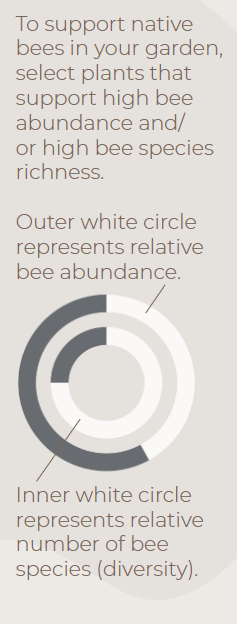The Garden Ecology Lab’s Pollinator Plant PR Campaign Presents….. Globe Gilia!
The Garden Ecology Lab is releasing a series of plant profiles of the top 10 Oregon native plants for pollinators, based on Aaron Anderson’s 2017-2019 field trials of 23 Oregon native plants. We will feature one plant per week for 10 weeks, this is week 8! Profiles will include photos, planting information, and will highlight common pollinators of each plant.

some rights reserved
Plant Facts
- Scientific Name: Gilia capitata
- Life Cycle: Annual
- Growth Habit: Erect, clusters
- Bloom Duration: May – June
- Hardiness Zone: 7-10
- Light requirements: full sun
- Special Traits: Drought tolerant, tolerant to various soil types.
- When to plant: Seeds can be sewn directly in the fall, or can be stratified indoors over the winter before planting out in the spring.
Pollinator Facts
- Globe Gilia provides both nectar and pollen to its insect visitors.
- Gilia was found to be associated with the yellow-faced bumble bee, Bombus vosnesenskii in Aaron’s research.
- Globe Gilia is also a larval host for at least one moth species, Adela singulella, but possibly four others as well.
- In addition to insect visitors, Gilia is can be an occasional nectar source for hummingbirds1, which love its tubular flowers!

some rights reserved
Globe Gilia‘s Native Range in Oregon
There are three subspecies of Gilia capitata in Oregon: Bluefield Gilia (ssp. capitata), Dune Gilia (ssp. chamissonis), and Pacific Gilia (ssp. pacifica). Dune Gilia and Pacific Gilia are considered to be rare plants in California (rare, threated, or endangered, rank 1B). Distribution maps acquired from Oregon Flora with imagery from Google. Copyright 2022.
Globe Gilia as a pollinator plant
Globe Gilia may have only been associated with a single bee species in Aaron’s native plant research, but it is truly a powerhouse of an annual plant: it supports a highly diverse and abundant community of native bees! Gilia’s globe of flower heads provide pollinators with plenty of foraging spots to choose from, and the dense mass also allows easy access for both small and large pollinators, by acting as a nice landing pad. From their comfortable perch, butterflies and larger-bodied bees can dip their proboscis (tongue) into the nectar-rich blossoms. Smaller bees may need to crawl in to the individual flowers to access the nectaries.
Gilia is a great annual plant option to include in pollinator mixes and in meadows. It’s an easy to care for plant, requiring minimal water during the growing season. It grows up to three feet in height with lovely lavender – dark purple – blue flower heads, lacy foliage, and surprising blue pollen! The flowers contrast wonderfully with many other mid-summer blooms, such as poppies, Oregon sunshine, asters, and Clarkia.


Infographics developed by LeAnn Locher, Aaron Anderson, and Gail Langellotto.
Abundance Calculations. Bee abundance was calculated using estimated marginal means of bee visitation to each of our study plants from 5-minute observations conducted from Aaron’s 2017-2019 field seasons. Estimated marginal means (EM Means) were assigned to categorical values and averaged across years to yield the following categories: 0% = Very Low =EM mean below 0.49; 25% = Low = EM mean of 0.50 to 0.99; 50% = Moderate = EM mean of 1 to 1.49; 75% = High = EM mean of 1.50 to 1.99; and 100% = Very high = EM mean above 2.0.
Diversity Calculations. Bee diversity was based on the total sum of species collected on each of our study plants from 2017 to 2019. A Chao 2 Estimator was used to estimate total expected species richness for each plant; Chao 2 estimates were then used to create categorical values, as follows: 0% = Very Low = 9.99 or lower; 25% = Low = 10 to 14.99; 50% = Moderate = 15 to 19.99; 75% = High = 20 to 24.99; 100% = Very high = 25 or higher.
Did you know?
When you think about pollen, one color tends to come to mind: yellow. Perhaps you conjure up an image of a bumblebee in a field of clover, weighed down by some giant orange-toned pollen baskets as well. Many of us might stop there, and conclude that pollen must be either yellow or orange, as those are the predominant pollen colors we see in the plant world. The absolutely exciting news is that, like flower colors, pollen also comes in a rainbow of colors. Globe Gilia, for example, has pollen that comes in shades of blue!
A spotlight on pollen colors
As some of you may remember from my (Jen’s) 2021 field update, last summer, a few of us from the Garden Ecology lab had the wonderful opportunity to visit Jasna Guy and Lincoln Best’s exhibit ‘In Time’s Humm’ at the High Desert Museum in Bend. Part of this display was a pollen color study, showing Jasna’s recreations of pollen colors using pastels. We saw pollen in shades of yellows, oranges, red, pink, purple, white, and even green. Color can truly be found anywhere if you look closely enough! Perhaps it should be no surprise then, that even nectar may come in various colors, too… If you’re excited about pollen colors like we are, you might see if your local library has a copy of this book, and you might enjoy looking at pollen colors through the seasons, put together by the North Shropshire Beekeepers’ Association.
Now back to Globe Gilia: Photos from the field
Tune in next week for the next edition of our Pollinator Plant PR Campaign.























